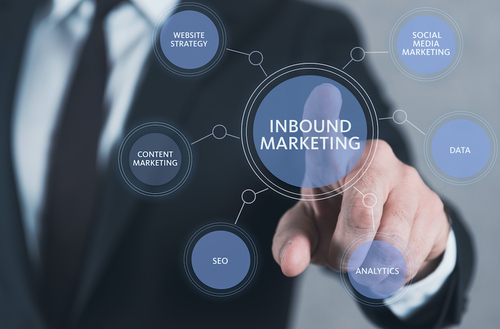Mastering Inbound Marketing for Business Growth
Last Updated on June 10, 2024 by Richard Martin Linga
Inbound marketing is a way to attract customers by creating and sharing useful content. This method helps draw people to your business. Unlike old marketing methods, it doesn’t fight for attention. Instead, it makes content that solves problems for your ideal customers. This builds trust and credibility. Today, more people go online to learn about products and services. So, businesses need to be easy to find online and provide valuable content to keep customers interested. It is also cheaper than traditional marketing methods. It helps businesses create stronger customer relationships. A content marketer plays a key role in creating engaging content that attracts the right audience. By focusing on customer relationships, businesses can ensure long-term loyalty and repeat business.
An SEO Specialist Philippines can help improve a business’s online presence. They optimize website content, build good backlinks, and make sure the site is easy to use. This attracts more organic traffic to the website, leading to more leads generated and sales. Marketing analytics tools help track the performance of inbound marketing efforts, ensuring strategies are effective and goals are met. It also uses earned media, which includes free publicity gained from word-of-mouth and online mentions. By making valuable content and building strong customer relationships, businesses can keep customers coming back. This marketing-focused approach, combined with marketing automation tools, ensures efficient and successful campaigns. This leads to long-term success and growth for businesses.
What is Inbound Marketing?

Inbound marketing is a way to attract customers by creating and sharing useful content. This method focuses on drawing people to your business instead of pushing products on them. For instance, instead of using ads, it uses blogs, videos, and social media posts to engage potential customers. This helps build trust and shows that a business understands the needs of its audience. In other words, it aims to create a connection with people by being helpful and relevant.
The Essence of Inbound Marketing
The essence of inbound marketing is about being helpful. Businesses create content that answers questions or solves problems for their audience. This approach makes customers feel valued and understood. For example, a blog post offering tips on a common problem can attract people looking for solutions. Therefore, it is about providing value first and building relationships with customers. This way, when they are ready to buy, they trust the business and its products or services.
How it Works
It works by attracting visitors with valuable content and converting them into leads through offers like free guides or newsletters. It focuses on understanding audience needs and building long-term relationships. Customers are more likely to return and make purchases. Utilizing SEO packages helps optimize the website, increasing organic traffic and leads generated, which supports sustained growth. This combination enhances the effectiveness of inbound marketing efforts.
Key Components of Inbound Marketing

Content Creation
Content creation is a key part of inbound marketing. It involves making useful and interesting content that attracts customers. For instance, blogs, videos, and infographics are common types of content. This content should answer questions or solve problems for your audience. In other words, the goal is to provide value so people trust your business. Therefore, high-quality content is a foundation of any successful inbound marketing strategy.
The Role of SEO
SEO, or search engine optimization, helps people find your content online. It involves using the right keywords, like inbound marketing, to improve your search rankings. So, when people search for information, your content appears at the top. An SEO Specialist Philippines can help with this. They make sure your website is easy to find and navigate. In addition, good SEO, including SEO link building, brings more visitors to your site, making your inbound marketing more effective.
How Social Media Enhances Inbound Marketing
Social media is another key component of inbound marketing. It helps you share your content with a wider audience. For instance, you can post links to your blog on Facebook or Twitter. This increases the chances of people finding your content. So, social media engagement is crucial for spreading your message. After that, you can interact with your audience, answer questions, and build relationships.
Lead Nurturing
Lead nurturing is about building relationships with potential customers. It involves providing useful information and staying in touch over time. For instance, you can send emails with helpful tips or updates about your products. This keeps your business on their mind. In other words, lead nurturing turns interested visitors into loyal customers. Above all, it helps you build trust and credibility, which are key for long-term success.
Benefits of Inbound Marketing

It offers many benefits for businesses. First, it helps attract the right customers. Instead of pushing your message out, you pull in those who are already interested. So, this means you get higher-quality leads. Also, it builds trust with your audience. By providing valuable content, you show that you care about their needs. In other words, it makes your brand more credible and trustworthy.
Building Long-Term Relationships
Inbound marketing is great for building long-term relationships with your customers. By consistently providing helpful content, you keep your audience engaged. For instance, you can use blogs, social media, and emails to stay in touch. In addition, this ongoing interaction keeps your brand top-of-mind. Therefore, it is easier to turn leads into loyal customers. Above all, it focuses on creating lasting connections that benefit both your business and your customers.
Measuring Success
Another benefit of inbound marketing is that it is easy to measure success. You can track how well your content is performing using various tools. For example, you can see how many people visit your website, read your blog, or follow you on social media. This data helps you understand what works and what doesn’t. So, you can make informed decisions and improve your strategy. In other words, it provides clear insights that help you grow your business effectively.
Inbound Marketing vs. Outbound Marketing

Understanding Outbound Marketing
Outbound marketing is the traditional way of marketing. It involves reaching out to people to promote products or services. For instance, this includes TV ads, radio commercials, and cold calls. So, the focus is on pushing the message to a broad audience, hoping to catch their interest. In other words, it interrupts people to grab their attention. Therefore, it often feels more intrusive compared to inbound marketing.
Comparison of Inbound vs. Outbound Marketing
It is different from outbound marketing. Instead of pushing messages out, it draws customers in by providing valuable content. For example, blogs, social media posts, and videos attract people who are already interested. So, inbound marketing feels less intrusive and more engaging. Also, it is usually more cost-effective than outbound marketing. In addition, it helps build trust and long-term relationships with customers. This is because it focuses on solving problems and answering questions, rather than just selling products.
Benefits of Inbound Marketing Over Outbound Marketing
Higher Conversion Rates
There are several benefits of choosing inbound marketing over outbound marketing. First, it attracts higher-quality leads. People who find your content are already interested in what you offer. After that, they are more likely to become customers, leading to higher conversion rates. Also, inbound marketing is more cost-effective. It often requires less money to create content than to run ads. Therefore, it is a better option for small businesses.
Measuring Success with Marketing Analytics
Tracking Leads Generated
Marketing analytics tools help track the performance of inbound marketing efforts. They show how many leads are generated, how visitors interact with your content, and which strategies are most effective. This data helps refine your approach and ensure that your inbound marketing efforts are successful. Traditional marketers often rely on broader metrics, while inbound marketing focuses on detailed analytics to improve the customer journey.
Effectiveness and Efficiency
It is generally more effective and efficient. It targets people who are actively looking for solutions, so your efforts are more likely to pay off. For instance, a blog post that answers a common question can attract many visitors over time. So, it continues to work for you long after the content is created.
Creating an Effective Inbound Marketing Strategy

Steps to an Effective Strategy
Creating an effective inbound marketing strategy involves simple steps. First, understand your target audience. Know who they are, what they need, and where they spend time online. After that, create content that addresses their needs. For instance, write blog posts, make videos, or create infographics that solve their problems. So, this will attract them to your site.
Next, optimize your content for search engines. Use keywords to help people find your content. An SEO Specialist Philippines can help with this. Also, promote your content on social media. Share it on platforms where your audience is active. Therefore, more people will see it and visit your site.
Creating Valuable Content
The first step in your inbound marketing strategy is creating valuable content. Your content should be helpful and interesting to your audience. For instance, write blog posts that answer common questions, create videos that show how to solve problems, and design infographics that make complex ideas simple. So, when your audience finds your content useful, they are more likely to trust your business.
Using SEO to Increase Visibility
SEO is a key part of inbound marketing. It helps people find your content online. Use keywords in your titles, headings, and descriptions. An SEO Specialist Philippines can help you choose the right keywords and optimize your content. Also, make sure your website is easy to navigate. Therefore, visitors can find what they need quickly and stay longer on your site.
Engaging with Your Audience
Engaging with your audience is important for building relationships. Respond to comments on your blog and social media posts. This shows that you care about their opinions. Also, ask questions and encourage discussions. After that, use email marketing to stay in touch with your audience. Send them updates and valuable information. In other words, keep your brand in their minds.
Measuring Your Success
Finally, measure your success to see what works. Use tools to track how many people visit your site, read your blog, or follow you on social media. This helps you understand what your audience likes. For instance, if a blog post gets a lot of traffic, create more content on that topic. Therefore, you can improve your strategy over time and achieve better results.
Tools and Technologies for Inbound Marketing

Essential Tools
Several tools can help make your strategy successful. Use content management systems like WordPress, email marketing tools like Mailchimp, and social media management tools like Hootsuite. These tools help you create, manage, and promote content effectively.
Leveraging Technology
Technology is key in inbound marketing. Use SEO tools like Ahrefs and SEMrush to optimize content. Analytics tools like Google Analytics provide insights into audience behavior. Marketing automation tools like HubSpot streamline tasks, making your inbound marketing strategy more efficient.
Integrating Tools for Better Results
Integrating different tools enhances your inbound marketing efforts. Connect your CMS with email marketing tools to send targeted messages. Integrate social media tools with analytics to track performance. This helps you adjust your strategy for better results and more customer engagement.
Benefits of Using Inbound Marketing Tools
Inbound marketing tools save time and improve results. Automate tasks like social media posting, optimize content for search engines, and reach a wider audience. These tools make it easier for people to find your business online, leading to better success.
Choosing the Right Tools for Your Business
Choosing the right tools is important. Consider your goals, needs, and budget. For SEO, use Ahrefs; for social media, use Hootsuite. Pick tools that fit your needs and help achieve your inbound marketing strategy goals.
Keeping Up with New Technologies
Stay updated with new technologies to keep your inbound marketing effective. New tools and techniques emerge constantly. For instance, AI-powered tools analyze data efficiently. Keeping up ensures your strategy remains competitive and effective. Continuous learning is crucial for success.
Conclusion
Inbound marketing is a powerful way to attract and engage customers. It uses valuable content to draw people in, rather than pushing messages out. This method builds trust and long-term relationships. So, it’s cost-effective and brings higher-quality leads. Therefore, it’s a smart choice for businesses of all sizes. The importance of inbound marketing cannot be overstated. It helps businesses connect with their audience in a meaningful way.
It offers many benefits, such as cost savings and better engagement. An SEO Specialist Philippines can optimize your content to be found online. Therefore, using the right tools enhances your strategy’s effectiveness. The future of inbound marketing looks promising. So, continue to learn and adapt, and always focus on providing value to your audience.
FAQs
1. What is Inbound Marketing?
Inbound marketing is a way to attract customers by creating valuable content. This content draws people to your business naturally. In other words, it focuses on attracting rather than pushing.
2. How Does Inbound Marketing Work?
It works by using content to attract visitors. For instance, blogs, social media posts, and videos help engage potential customers. So, this method builds trust and leads to conversions.
3. Why is Inbound Marketing Important?
It is important because it builds long-term relationships with customers. It’s cost-effective and attracts high-quality leads. Therefore, it helps businesses grow sustainably.
4. What are the Key Components of Inbound Marketing?
The key components include content creation, SEO, social media engagement, and lead nurturing. These elements work together to attract and convert customers.
5. How Does Inbound Marketing Differ from Outbound Marketing?
It attracts customers with valuable content. Outbound marketing pushes messages to a wide audience, like TV ads. Therefore, inbound is less intrusive and more engaging.
6. What Tools are Essential for Inbound Marketing?
Essential tools include content management systems, email marketing tools, and social media management tools. These help create, manage, and promote content effectively.
7. How Can SEO Enhance Inbound Marketing?
SEO helps your content rank higher in search results. Using keywords like “inbound marketing” makes your content easier to find. Therefore, more people visit your site.
8. What is the Role of an SEO Specialist Philippines in Inbound Marketing?
An SEO Specialist Philippines optimizes your content for search engines. They ensure your business appears in search results, attracting more visitors. So, they play a crucial role in your strategy.
9. What are the Benefits of Inbound Marketing?
Benefits include cost savings, better engagement, and higher-quality leads. It’s also builds trust and long-term relationships with customers. Therefore, it’s a valuable strategy for any business.
10. How Can I Measure the Success of My Inbound Marketing Strategy?
Use analytics tools to track website traffic, social media engagement, and lead conversions. These metrics help you understand what works and improve your strategy. So, you can achieve better results.







